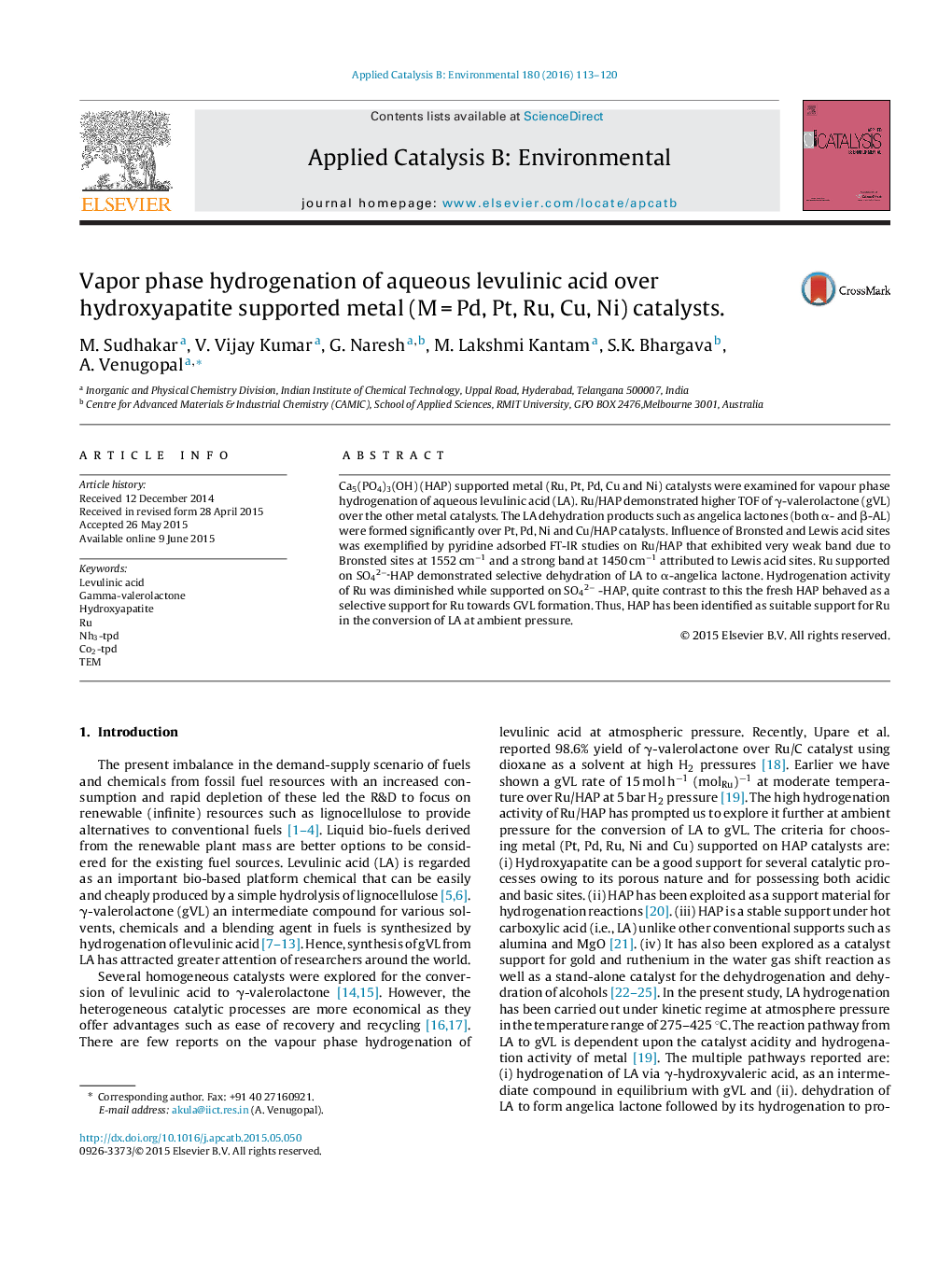| Article ID | Journal | Published Year | Pages | File Type |
|---|---|---|---|---|
| 45226 | Applied Catalysis B: Environmental | 2016 | 8 Pages |
•Ca5(PO4)3(OH) a suitable support for Ru in hydrogenation of aqueous levulinic acid•Enhanced gamma-valerolactone yields with H2O as solvent•Weak Bronsted acid sites on Ru/hydroxyapatite led to gamma-valerolactone•Pyridine adsorbed IR spectra revealed weak Bronsted acid sites on Ru/hydroxyapatite•High TOF of γ-valerolactone over Ru/Ca5(PO4)3(OH) compared to Pt and Pd.
Ca5(PO4)3(OH) (HAP) supported metal (Ru, Pt, Pd, Cu and Ni) catalysts were examined for vapour phase hydrogenation of aqueous levulinic acid (LA). Ru/HAP demonstrated higher TOF of γ-valerolactone (gVL) over the other metal catalysts. The LA dehydration products such as angelica lactones (both α- and β-AL) were formed significantly over Pt, Pd, Ni and Cu/HAP catalysts. Influence of Bronsted and Lewis acid sites was exemplified by pyridine adsorbed FT-IR studies on Ru/HAP that exhibited very weak band due to Bronsted sites at 1552 cm−1 and a strong band at 1450 cm−1 attributed to Lewis acid sites. Ru supported on SO42−_HAP demonstrated selective dehydration of LA to α-angelica lactone. Hydrogenation activity of Ru was diminished while supported on SO42− -HAP, quite contrast to this the fresh HAP behaved as a selective support for Ru towards GVL formation. Thus, HAP has been identified as suitable support for Ru in the conversion of LA at ambient pressure.
Graphical abstractFigure optionsDownload full-size imageDownload as PowerPoint slide
